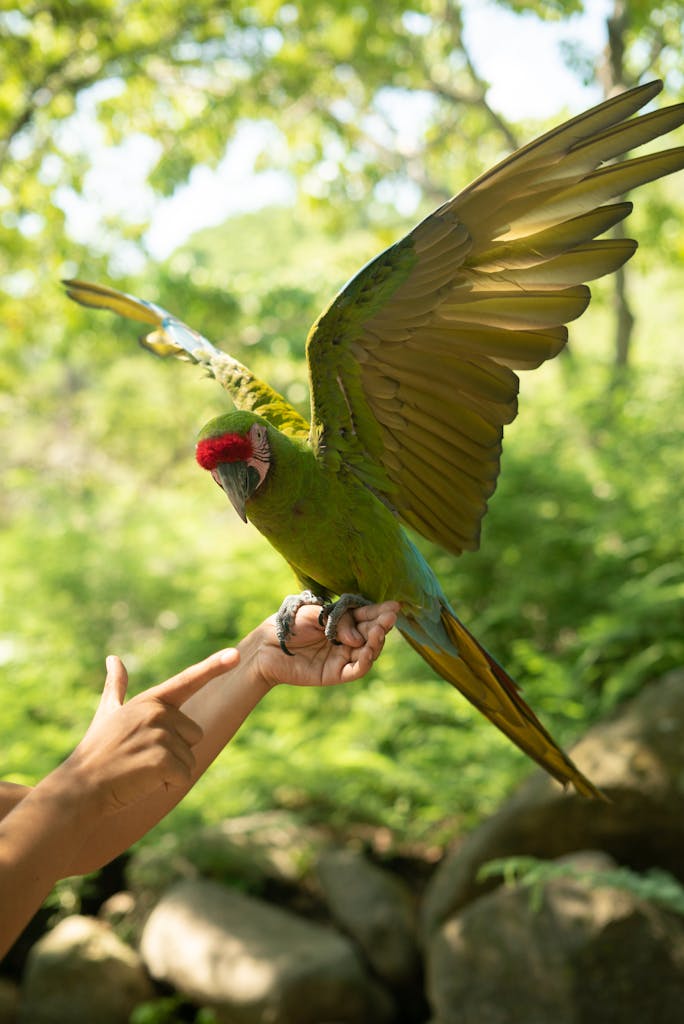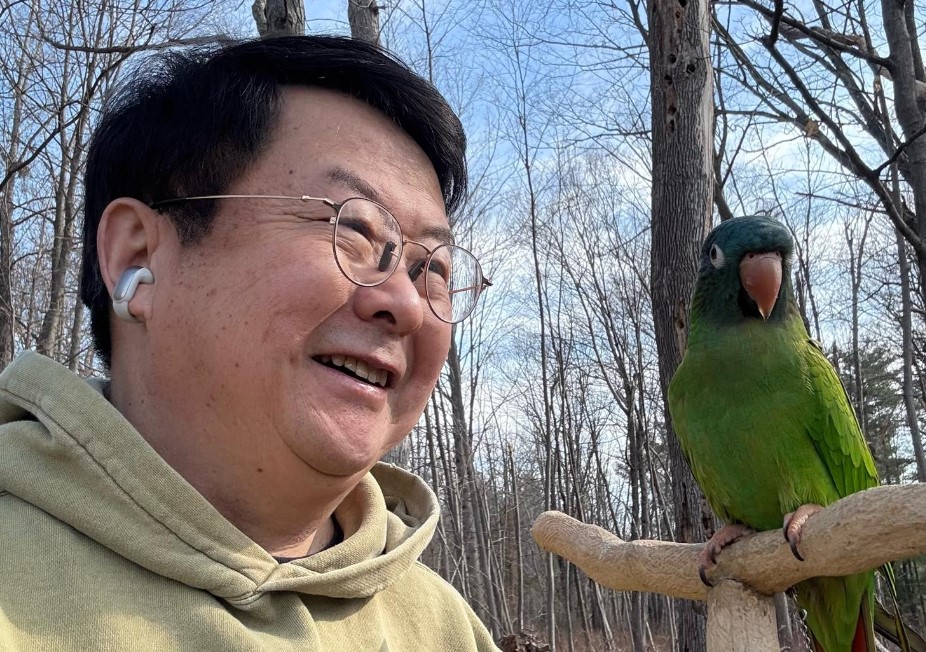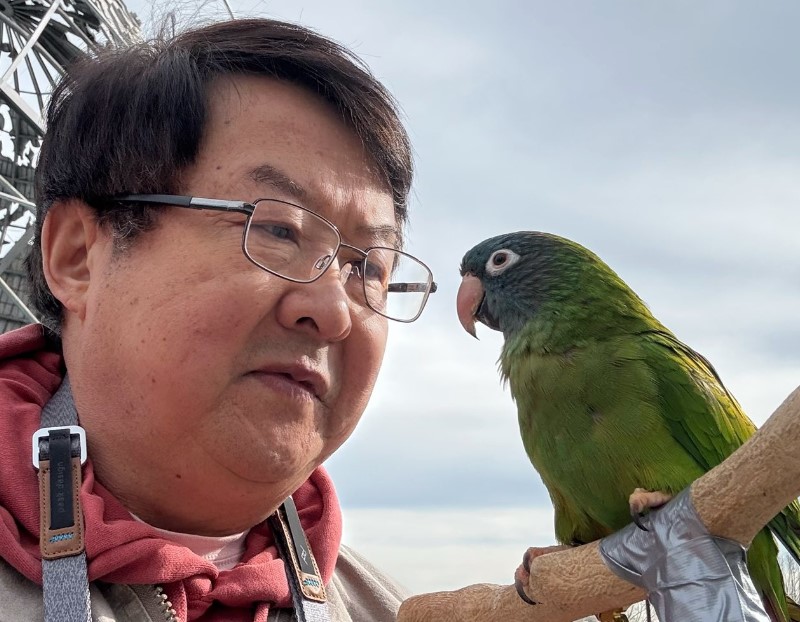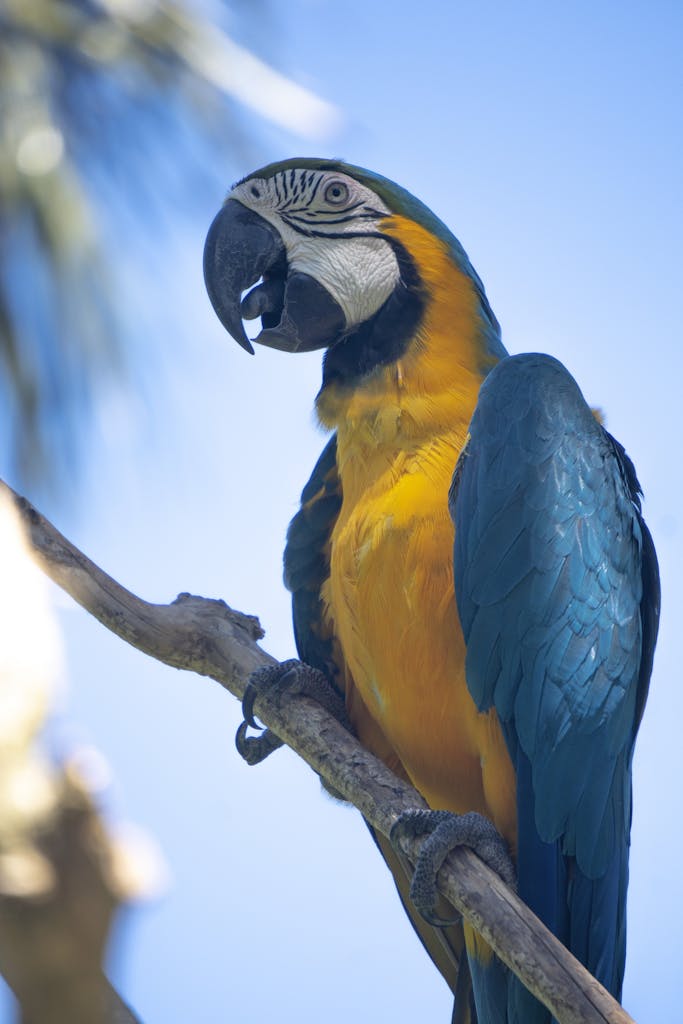 Curious Minds Have Feathers Too
Curious Minds Have Feathers Too
Welcome to the Smarter Side of Parrot Keeping
If you’ve ever looked into your parrot’s eyes and thought, “What on earth is going on in there?” you’re not alone. At Rational Parrot, we believe that question isn’t the start of confusion; it’s the beginning of understanding.
Parrots are complex, emotional, and endlessly fascinating. They shift moods in seconds, improvise communication, and test the boundaries of everything especially your patience. But beneath the noise and the nibbling is a mind that wants to connect. Our goal is to help you understand how.
This site was built for people who love their birds deeply and want more than surface level advice. Here, you’ll find trusted guidance rooted in science, shaped by hands on experience, and written with empathy.
From decoding body language to figuring out why your bird just launched broccoli across the room, every article is designed to help you see your parrot not just as a pet but as a thinking, feeling being.
Because birdkeeping shouldn’t just be about managing behavior it should be about building a relationship that works for both of you.


What If Your Parrot Knows More Than You Think?
You didn’t just bring home a bird, you brought home a mind. A mind that observes, imitates, remembers, reacts, and yes, sometimes outsmarts you. Parrots aren’t here to decorate cages or repeat catchphrases. They’re here to connect, to communicate, and to challenge the way we think about intelligence.
At Rational Parrot, we believe that once you understand just how extraordinary these creatures are, you can never look at them the same way again. They form social bonds like primates, solve puzzles like ravens, and express frustration, joy, fear, and love in ways we’re only just beginning to decode. They demand more of us, but they give even more in return.
This site was built for people who aren’t just looking for care tips, but who are genuinely curious about the minds behind the feathers. Here, we combine science with experience, stories with research, and behavior insights with practical advice to help you build a stronger, smarter relationship with your bird.
So if you’ve ever looked at your parrot and thought, “There’s more going on in there than I understand”, you’re absolutely right. And you’re exactly where you should be.
Welcome to Rational Parrot. Let’s dig in.
Meet David Avery
Founder of Rational Parrot
David Avery is a lifelong parrot enthusiast with over 20 years of hands on experience caring for and studying companion birds. What began with a childhood encounter at a wildlife rescue turned into a passion for understanding the minds behind the feathers.
In 2025, he launched Rational Parrot to share science backed insights, personal lessons, and practical advice for bird lovers everywhere. David now lives with six parrots (including the Blue-crowned Conure on the image) each one a daily reminder of how intelligent, emotional, and deeply misunderstood these creatures can be.

What Have We Covered In This Blog?
Understanding Species Specific Needs
From playful budgies to larger macaws, we explore the unique traits, behaviors, and needs of each parrot species. Learn how to tailor your care for parakeets, cockatiels, conures, cockatoos, and beyond because no two birds are truly alike.
Solving Common Behavior Challenges
Biting, screaming, feather plucking every parrot has a way of communicating. We decode the reasons behind the noise, the moods, and the mischief, helping you respond with empathy and science-backed solutions that strengthen your bond instead of stressing it.
Feeding Right, Feeding Smart
A balanced diet can make all the difference. We dive into species appropriate nutrition, safe fruits and veggies, toxic foods to avoid, and how to build routines that keep your bird healthy, active, and ready to take on the day.
Care Tips, Daily Routines & Enrichment
From their living space setup to mental stimulation, everyday care essentials that go far beyond the basics. Enrichment ideas, grooming tips, and emotional wellness strategies help your bird thrive not just survive in your home.
Why You Should Be Fascinated By Your Parrot
Parrots aren’t just pets they’re thinkers, problem solvers, emotional powerhouses packed into feathers. These birds have the intelligence of toddlers, the memory of an elephant, and the social needs of a soap opera cast. They dream, they mimic, they manipulate, they mourn. And if you’re lucky, they choose you.
At Rational Parrot, we believe fascination is the first step to responsible care. When you realize your bird isn’t just repeating words, but testing responses when you notice that sideways glance isn’t fear, but calculation when you catch your bird inventing a game just to get your attention that’s when you know you’re not living with a pet. You’re sharing space with a mind.
This blog exists to feed that fascination. Through science, stories, and lived experience, we unpack what makes parrots extraordinary and how you can better meet their needs, earn their trust, and deepen your bond.
If you’re here to learn, question, and fall a little more in love with your bird each day welcome.

What Makes Us Different?
Most bird care blogs tell you what to do. We focus on helping you understand why.
What makes Rational Parrot special isn’t just the information it’s how we deliver it. Every article here is rooted in science but written with heart. We don’t copy tips from care sheets or parrot forums we blend current research, hands-on experience, and behavior-based insights to give you guidance that’s as practical as it is respectful.
We don’t treat parrots like quirky pets or pretty decorations. We treat them like the intelligent, emotional, and deeply social beings they are. And that changes everything from how you train, to how you feed, to how you build trust.
This isn’t a quick-fix site. It’s a place for thoughtful owners who want to go deeper, you’re here to understand your bird, not control it.
Welcome to the flock.
Categories We’ve Covered
Discover how to care for energetic parakeets from bonding tips to enrichment ideas. Learn what makes these small birds so social, intelligent, and rewarding to live with in any home.
Conures are bold, playful, and curious companions. Our guides cover behavior insights, noise management, nutrition, and everything you need to raise a happy, healthy conure with confidence.
Bold, majestic, and incredibly smart, macaws need space, structure, and mental challenges. Learn to meet their unique needs while building trust with one of the most intelligent bird species.
Colorful, active, and full of attitude lovebirds live up to their name. From diet and bonding to behavior challenges, explore how to keep your pair (or solo bird) thriving.
Expressive, emotional, and highly intelligent. We explore enrichment and routines that support their needs while preventing destructive or attention-seeking behaviors.
Get answers to all your everyday bird questions- housing, training, vet visits. This section simplifies the essentials so you can confidently care for your parrot.
Dive into the world of budgies: they are vocal, clever, and full of personality. Explore training, diet, and care tips designed to help your budgie thrive emotionally and physically every day.
Gentle and affectionate, cockatiels make wonderful companions. Learn about their unique vocalizations, crest language, care essentials, and how to create a nurturing environment for your Cockatiels.
A healthy parrot starts with the right diet. Explore species specific feeding tips, safe food lists, and how to create a balanced menu that supports your bird’s long-term health and well-being.
